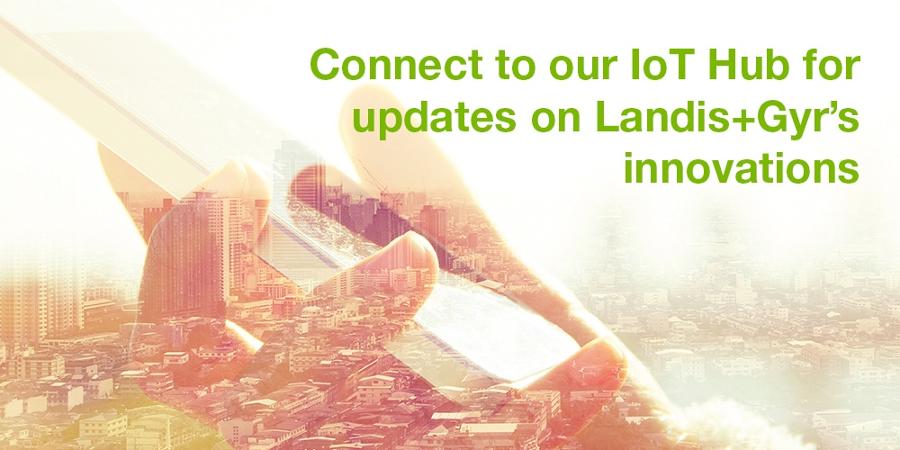Four leading distribution system operators in Poland are joining forces to modernize their power grid.
In Europe-wide assessments of grid stability, Poland often scores below average, with a System Average Interruption Duration Index (SAIDI) and System Average Interruption Frequency Index (SAIFI), both significantly higher than the EU average. This means that Polish consumers lose their power supply more often than their European neighbors, and the total amount of time without power is longer.

“For one thing, we have a lot of overhead lines,” says Andrzej Szymanski, Country Manager of Landis+Gyr Poland. “In urban areas, of course, we run underground cables, but across the country we have a very large number of overhead lines. This means that when we have heavy storms, thousands of people across the country can lose power.” In addition, the network infrastructure is very old and requires a lot of investment in new technology. There are also legal barriers to network upgrades. “Following political liberalization in Poland in 1989 and country’s transition to the market economy, private property laws were made very strong,” says Szymanski. “It’s extremely difficult for utility companies to get legal approval to install new equipment on privately owned land.”
In spite of these difficulties, change is coming. In May 2015, Landis+Gyr won a major contract with four of the largest Polish distribution system operators (DSOs) to supply a total of 36,000 S650 Smart Grid Terminals for the medium- and low-voltage network. The four DSOs – Tauron Dystrybucja, RWE Stoen Operator, Enea Operator and PGE Dystrybucja – teamed up in October 2014 to launch a single public tender for balancing meters to upgrade their medium- and low-voltage transformer stations. The goal of the joint bid was to identify a single suitable supplier, allowing the DSOs to ensure that a unified data collection standard was possible across their networks.
So far, the project is running on schedule. “Implementation has started and we will see first results by early 2016,” says Szymanski.
This is just the beginning. In total, the Polish DSOs will need to upgrade 250,000 transformer stations with smart grid equipment. And smart grid terminals are just the first device needed. “The terminals’ energy balancing and power quality measurement functions will enable the utility companies to locate problems when they occur. They provide an ‘eye’ onto the network,” says Szymanski. This solution will enable utilities to minimize customer outages and reduce SAIDI and SAIFI. Moreover, by visualizing power quality issues in the network, DSOs will be able to identify areas where upgrade investments are needed. The next step would be to install further advanced smart grid technology, to achieve greater grid resilience and power supply reliability.
The modernization program is not entirely motivated by the desire for increased stability in the network, however. There is another driver in the shape of new legislation, the Renewable Energy Act. From January 1, 2016, small-scale (up to 10 kW) producers of energy from renewable sources, called prosumers (a portmanteau of producer & consumer), will be supported with feed-in tariff (FIT) subsidies, while at the same time new tariffs will encourage utility companies to become more customer-oriented. “Photovoltaic and heat pump technology is already widespread in Poland,” says Szymanski, “and it is only going to grow under this new legislation.” This decentralized grid will need a more flexible and robust network to handle the two-way flow of electricity as well as monitoring energy flow accurately to enable billing while minimizing outage time. The delivery of 36,000 S650 Smart Grid Terminals is just the first step towards a smart grid that can support a variety of Internet of Things devices and solutions.
“It’s a learning curve on both sides,” says Szymanski. “And the project is evolving as we move forward. We expect to see more utility tenders, with new requirements for the new devices and software solutions needed in the next phases of the project.”
It remains to be seen to what extent the DSOs will make the changes necessary to run a single, unified, nationwide smart grid system. At present, the companies run different data collection and management software, with all the cross-compatibility problems this entails. “Our devices are ready for an IoT system,” says Szymanski. “I’m confident that Polish regulations and standards will continue to drive the adoption of smart grid technologies. And IoT-enabled devices will play a key role in building a grid that is smarter and more efficient.”
The Polish market in brief
Area: 312,679 km2 • Total distributed power: 150 TWh
Poland currently generates around 90% of its heat and electricity from coal. EU climate goals mandate that the proportion of renewable energy in the overall energy mix rise to 15% by 2020. In 2012, renewables made up 9.3% of the energy mix.
The Polish DSOs involved in the smart grid project:
Tauron Dystrybucja
Part of the TAURON Group, the second-largest energy company in Poland, delivering 45,000 GWh of electricity to customers across an area of 57,940 km2 or 18.5% of the country.
RWE Stoen Operator
Serves 964,000 customers in and around Warsaw, managing the energy grid and operating the distribution network.
Enea Operator
A subsidiary of Enea SA, and one of the four largest electricity providers in Poland, Enea Operator provides electricity to customers in six provinces over an area of 58,213 km2.
PGE Dystrybucja
Supplies 423,000 customers in the southeast of Poland with electricity, covering 15,283 km2. Belongs to the PGE Polska Group which in total makes up around 40% of the country’s domestic energy production.







